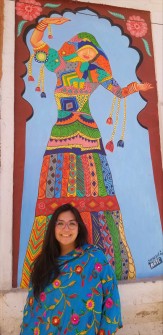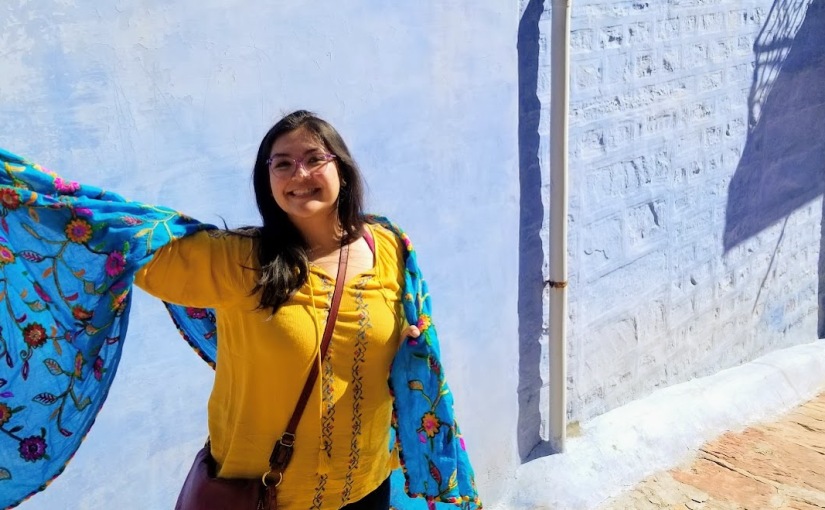Use mineral or boiled/filtered water for drinking and brushing your teeth. We tried (and admittedly) failed to minimize our plastic bottle use, but were not able get around this because we were mostly on long-haul drives and didn’t have time or space to filter/boil water. I brought my Lifestraw but unfortunately it wasn’t really that efficient for two people or when you’re constantly on the go and just want a swig of water without holding too many items.
When we were staying with my partner’s family, they had a large vessel of boiled water that we poured into travel bottles when leaving for the day. I suggest asking for something similar (vessel and large cooking pot + stove) if you’re staying at an Airbnb or apartment, and bringing a large bottle when you’re out and about for the day.
For my our next trip, I’ll be purchasing Lifestraw bottles for my partner and me so we don’t have to deal with this issue.

Look up pictures of the local people and city culture of where you’re traveling and pack/dress accordingly. It’s no secret that female travelers are encouraged to dress modestly when traveling in India. If you’re going to places like Goa or Mumbai, the local culture tends to be more lax about clothing. But in other states and cities, it’s in the traveler’s best interest to follow local customs when it comes to dressing. I think the best practice would be to look up the place ahead of time so you have a good idea of what people wear there.
We were traveling in Calcutta and Rajasthan, both places in which the local culture tends to be more conservative. It was easy for me to dress modestly because it was literally winter, but if you’re struggling with the heat I recommend wearing light, breathable layers. Bring or buy a thin shawl to drape around your shoulders/cover your chest, and wear either longer skirts or loose-fitting pants.
I know, I know, the female body was not created for the male gaze and in a perfect world we could dress however we want and not give two fucks about what people think. But the fact of the matter is that there are certain customs in place when visiting other cultures, and in my opinion it’s worth making small, temporary adjustments to my behavior and habits in order to have a smooth experience when traveling in another country. Destabilizing the patriarchy is no doubt one of my main goals in life, but I’d rather not have to confront/lecture/fight people while I’m on vacation because they’re staring at my shoulders or chest.
That being said, I bought a shit-ton of shawls and needed to wear them anyway.
Pay the few extra dollars for hotels and Airbnbs with good reviews. You want to be able to trust that you’re in a safe place with clean facilities, so think of the extra money you’re paying as a small premium for peace of mind. Most places in India are fairly cheap (if you’re not staying at the Taj) so you won’t have to worry about going broke for safe and clean accomodation. The most expensive hotel we stayed in was Nachana Haveli, owned by Jaisalmer’s royal family, and it was about $100 per night.
This is critical for women traveling alone. There are so many horror stories online about shady hotels and guest rooms, especially with female travelers. I know you are resilient and strong and #notallmen and I’m sure the majority of the people you encounter in India are well-meaning, but I don’t think the $20 you’ll probably save is worth the risk, even it has a small chance of happening.
If you’re on a tight budget, I highly recommend either traveling with friends or meeting other travelers and staying in hostels or apartments with them. I’m in a group on Facebook of female travelers where we post about past and future travels, and it’s a great place to look for hostel/adventure buddies!
Local sweet shop in Calcutta – the mishti doi, rasgullas, and cham chams are a must try!
When it comes to food: err on the side of caution and follow the white people. I know most travel blogs say to go where the locals go, and in most cases this is true. But in places like India, food preparation can make or break your trip. Go to places where you find a mix of locals and tourists. If you want to be extra safe, follow middle-aged tourists or traveling families (and yes, white people). They tend to be where the food is safe while still tasty, because the food preparation generally uses filtered water and will generally have higher standards. This is not to say that small restaurants or street food stands are all unhygienic. I’m sure that the vendors and cooks in these places follow health and sanitation standards, but the fact of the matter is that the local people who eat there have been doing so for a long time and have built immunity to any local bacteria. Their stomachs can handle it.
Okay, okay, you are a wanderlusting travel nomad with an iron stomach and 2 months to kill in India. You want to eat like the locals do and experience everything that India has to offer you, including those enticing chaat stands on the corner of the street.
My biggest piece of advice would be to ease yourself into local cuisine: don’t go to the pani puri stand on your first day and chug the tamarind water. Instead, find places that are highly reviewed on TripAdvisor and Zomato by both locals and tourists, and make sure everything you eat is freshly made and hot.
In the event that Delhi belly does catch you, you can buy Imodium at most pharmacy or chemist shops for dirt cheap (15 rupees/$0.21 per tablet). Make sure you stock up for the rest of your trip, and it doesn’t hurt to get some electrolyte packets too (no Gatorade in India!!)
Personally, I know that I have a strong stomach. I usually love eating street food because it’s a cheap way to experience local cuisine. But India is a lot cheaper than places like Spain and Germany, and you can go to higher-end restaurants that are still affordable and will offer you local flavors and spices without the risk.
One of the best meals we had was at Ambrai Restaurant in Udaipur. It was on the fancier side with fancier prices than the local dhabas, but we sat at a table overlooking the water, ate the best ghatta I’ve ever had in my life, and were able to explore the beautiful haveli to which the restaurant belonged. We paid about $30 for a meal for two, after which we felt stuffed, satisfied, and sleepy (no drugs, just lots of carbs and fat). Was it more than we would have paid elsewhere? Yeah, of course. Would we have gotten quality food in cheaper places? No doubt. Do I regret it? Nope, again we decided not to risk the time it would take to get over upset stomach to save that money. If we were staying longer in each city and had a tighter budget, I might have reconsidered our dining options. But we only had 2-3 days in each place and wanted to make sure that we maximized our time doing activities and exploring.
HAGGLE! If you’re even remotely foreign or out-of-town, vendors will hike up their prices. My general rule is to haggle for 30-50% of what they initially say. If they’re ok with it, cool! If not, we can still settle for about 75% of their original asking price. The best trick is to look up what you want to buy or book beforehand and see what the general pricing should be. And when buying medicine/drinks/toiletries from local shops, make sure to check the printed maximum retail price (MRP) on the back.
These were the usual prices I paid for different things and experiences:
-
- Shawls: 150 rupees for cheap, thinner material. Although these aren’t the best quality they make for cute souvenirs (I may have gone crazy on these.)
- Real Kashmiri wool shawls generally go for 2000-5000 rupees, depending on quality and size. You want to be careful with these: there are infinitely many vendors who hawk fake cashmere and will charge you crazy “genuine” prices.
- Real kashmiri shawls have a distinct texture with small hairs. They’re generally not as silky or elastic as fake cashmere, but will still be smooth and soft to the touch.
- Junk Jewelry:
- bangle sets: 150-300 rupees/$2-4 for sets of 4, depending on the quality, thickness, intricacy of the design
- earrings: 60-150 rupees
- Chapals/Sandals: 200 rupees/~$3 when purchased at a street stand. We looked in shops and saw the same style/quality going for 400-500, so either steer clear of these vendors or up your haggling game!
- Chai: 50 rupees/$0.70-1 at restaurants and cafes (are usually pre-sweetened, so make sure to ask for separate sugar if you want it on the side)
- Hotels: $15-100, depending on the location, amenities, and popularity. Traveling around Rajasthan, we mostly stayed in havelis (small palaces and villas owned by nobility during the Raj) that offered breakfast and had parking for our rental car. Our cheapest hotel was in a town called Bundi, for a whopping $15
- Note: We only stayed in Bundi as a rest stop when we drove from Ranthambore to Udaipur, so we were surprised to see that it was a bustling tourist town! Before leaving in the morning we walked up to the Fort and Palace; I recommend staying here for at least a day for a less-crowded but still beautiful fort experience
- Entry Tickets for Museums/Palaces/Forts: 50-100/$0.71-1.50 rupees for Indians, anywhere from 200-500 /$3-7rupees for foreigners. I was lucky because my partner has an Indian passport and I look sort of kind of like I’m from the northeastern states, so we were able to book all of our excursions at local entry prices. No tip here, just a matter of circumstance and ~love.
My last tip and something I was profoundly surprised and moved by was that most people are willing to go out of their way to help strangers, so when you need it, ask for help. We had to ask for directions, for help maneuvering our car through narrow, claustrophobic streets, for where to find Imodium (my food tips are from first-hand witness experience, OKAY), and all of the people we encountered gave advice and their helping hand without hesitation. Most of the people we encountered were genuinely helpful and also curious. They made sure we had the right directions but also sometimes asked us where we’re from, where we’re going, and how we liked India so far. I loved this most about the country, that in the midst of so many people and colors and foods and rickshaws and smells and cows and wallahs, I also got glimpses of kindness and hospitality through its chaos.
